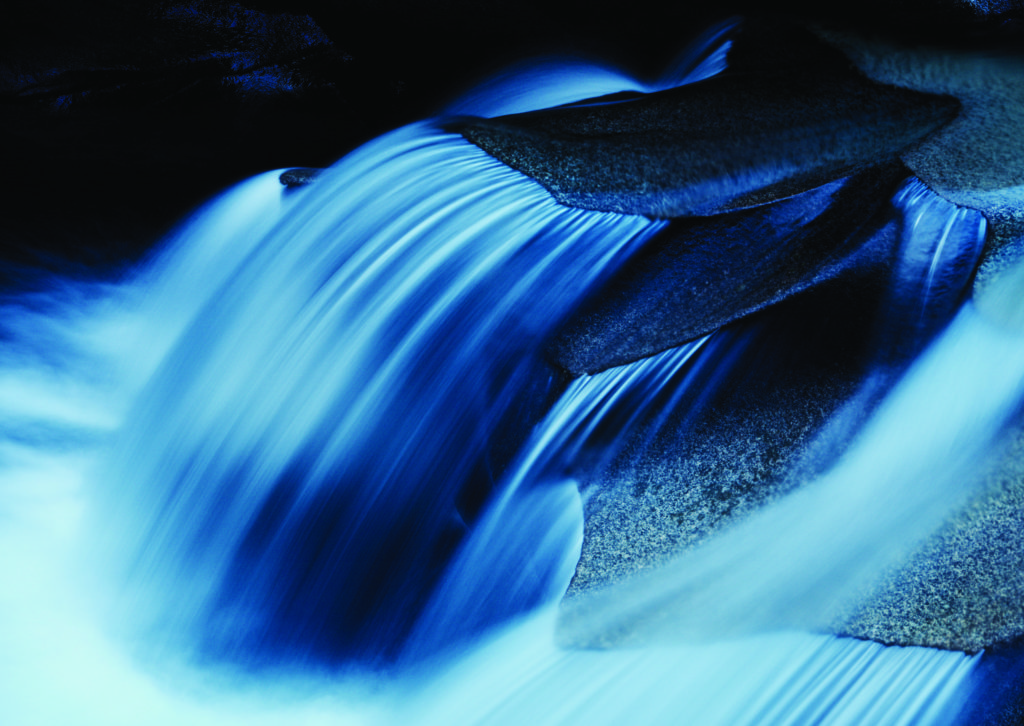
by Mark Harvey
On any dry August day in the Roaring Fork Valley, two people living at opposite ends of the food chain might hope—even pray—for different weather.
On one of the remaining cattle ranches in the valley, the foreman is looking at the heavy clouds to the west with bitter skepticism. He hopes for heavy rain. He doubts that it will develop today. His pastures are dry and dusty, the grass is getting beaten down and overgrazed by the cattle, and he needs water to rejuvenate the meadows.
Ten miles away, a CEO putting on his golf shoes and thinking ahead to his midday tee time is praying that the dark clouds to the west don’t spoil this day on the fairways. Golf on a local mountain course is his salve every Sunday.
Both men are caught in the high country water cycle: one with his livelihood, the other with his lifestyle. In a calendar year, the lives and fortunes of Roaring Fork Valley residents are shaped, nurtured, and occasionally destroyed by the rhythms of snow and water. You’d think that the hundreds of billions of gallons of water that come rushing down the creeks would be enough for just a few thousand people. But it never is.
You could say the cycle begins in April with a warm day when the temperature climbs to 50 degrees and hundreds of millions of tons of snow built up over the winter in the high country begin to melt. By late May the water comes ripping down the mountains, and the rivers rage and go brown and maroon with the mud torn off their banks.
For the rancher, it is the beginning of irrigation season and he begins the twice-a-day setting and moving of small tarpaulin dams on his ditches to flood his fields. The kayakers and rafters know this surge of water lasts only a few weeks and that now is the time to test themselves on the Slaughterhouse Rapid just north of Aspen, or on the Crystal River south of Carbondale. Ski instructors with feet still sore from 100 days of teaching in stiff plastic boots put on Tevas and a life vest and earn their bread in the rafting economy.
The six weeks of high water in May and June deliver more than half of Roaring Fork’s annual flows, a drunken spending spree in a semi-desertic land. After the spring deluge, the rivers dry up and shrink in just a few days. From the mucky meadows and rapids that buck and thrill the most skilled boaters, the rivers settle into quieter moods.
When the water clears, the anglers own the rivers. On the Roaring Fork, just a few miles downstream of Aspen, a fisherwoman takes out a delicately crafted fly rod, lovingly assembles it, studies her flies and selects a #16 Parachute Adams. She makes her first cast, a graceful wave of line and leader, and her fly drifts down onto the water’s surface. As it floats by amid a few gossamer bubbles, she feels something in her being click into place; her breath softens and she becomes a little more part of the river.
A hundred miles to the east, as the crow flies, a group of crack water lawyers and water engineers huddles in one of Denver’s airless offices and talk the business of western water. They are highly paid and play a ruthless game of chess against dozens of other entities chasing the same flows. Already close to half of the upper Roaring Fork Valley’s water flows east through diversion tunnels to feed Denver, Colorado Springs and Pueblo, instead of flowing west as nature and thousands of years of morphology would have it.
As the summer wears on, “the big dry” comes fast. Little puffs of dust at first and then the great plumes of fine earth that smell of sage and scrub oak. For the rancher, late July and August are months to limp through with the small flows in the irrigation ditches. He drains whatever earthen reservoirs he has to keep one last field green with the same feeling of bringing a checking account to zero.
Later in the fall, when the ground is dry and the grass is parched, the first snows come. Usually a temptress storm in early October of just a few inches—just a shot off the bow. By November the dark snow storms pound the mountains with what will be a billion tons of snow over the winter.
For the skiers and snowboarders, the snowstorms bring a drunken elation, anticipation and lots of talking smack about the out-of-bounds trails they intend to conquer over the upcoming winter.
New actors and new armies appear. Locals transform from rafting guides back to ski instructors. Squadrons of men and women with masterful plowing skills clear hundreds of miles of roads with Class 8 trucks at two in the morning.
Toward the end of the water cycle in March, the streams are frozen in parts, and engulfed with busty merengue-like snow banks. As people fight to stay ahead of the snowstorms, something quiet and miraculous begins in the creeks. A cutthroat trout picks a part of the winter stream with a gentle current to build her redd—a gravel nest on the creek bottom. She lays thousands of eggs as the male trout fight to fertilize them with their milt.
About a month later the eggs hatch and the tiny trout assume their place midway on the aquatic food chain: above the invertebrates and below the eagle. Someday one of these new trout may see a #14 Adams Parachute float by and be tempted to strike, but then swim off into the shadows, guided by an ancient instinct.
April again, and the snow is wet and heavy, somewhere between crystal and liquid. A few snow banks calve into a creek high above timberline. The creeks run, a little harder, faster.



